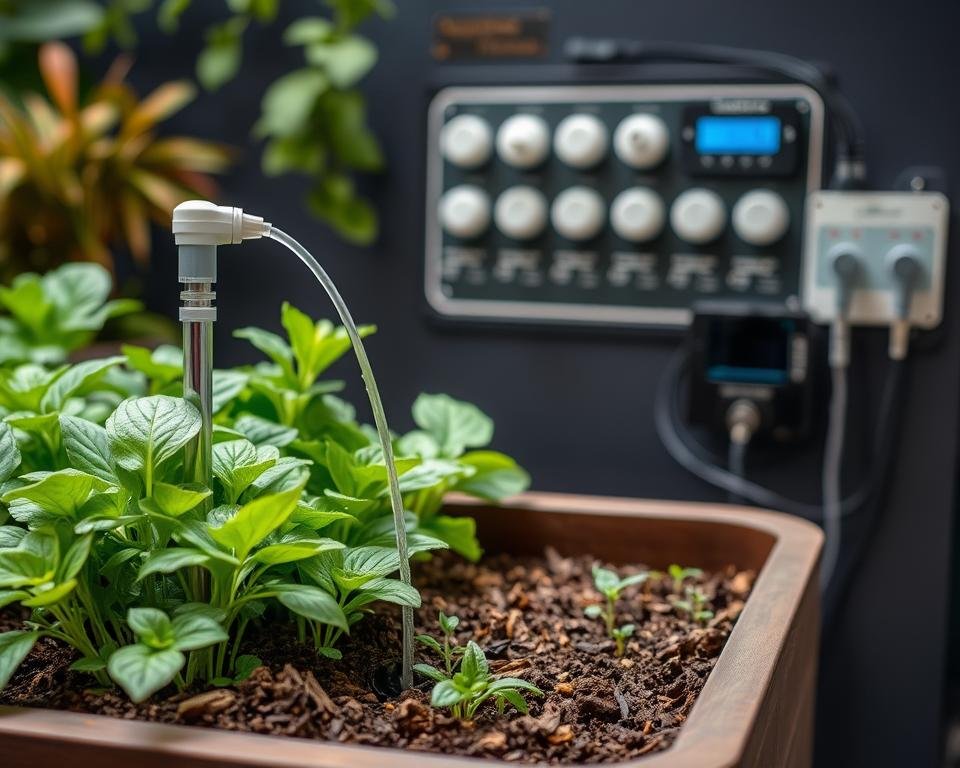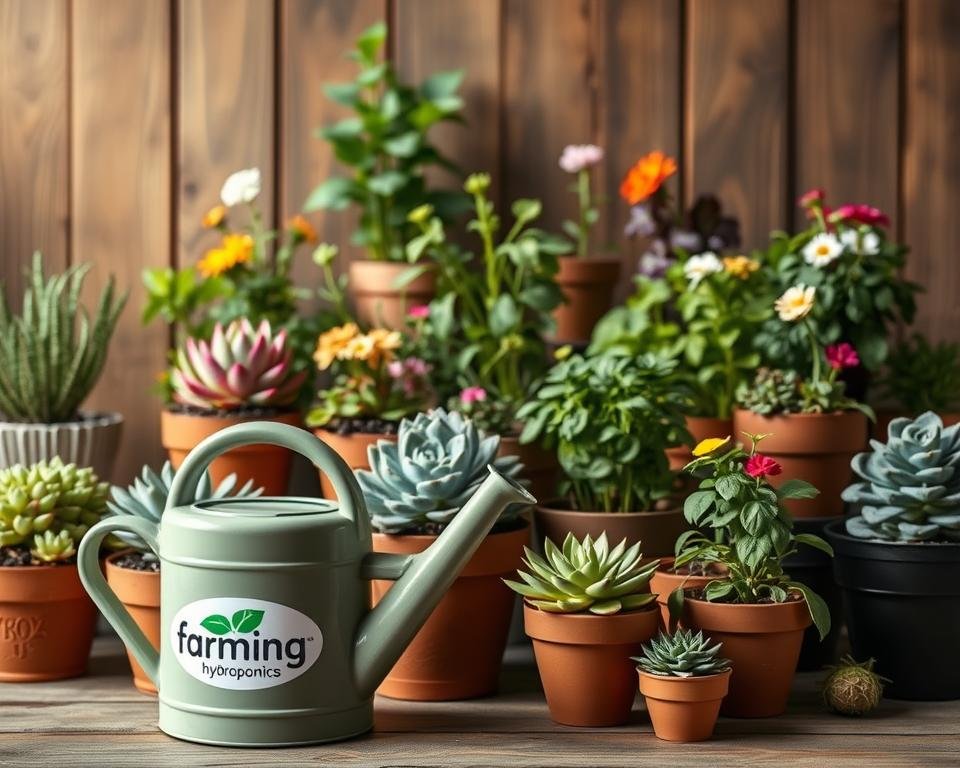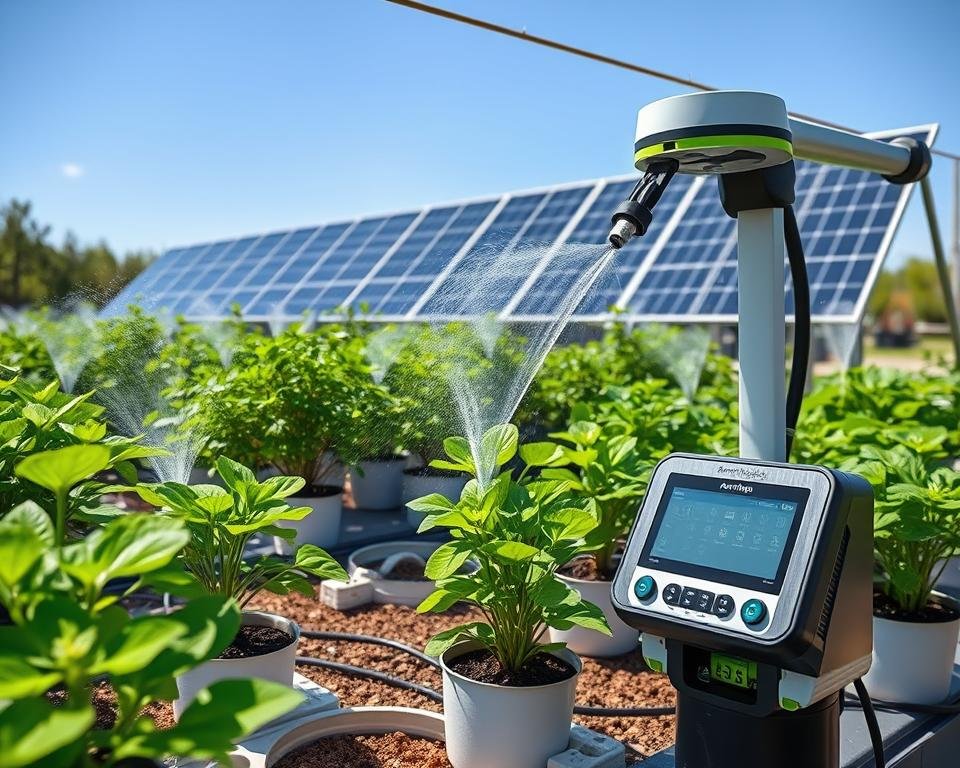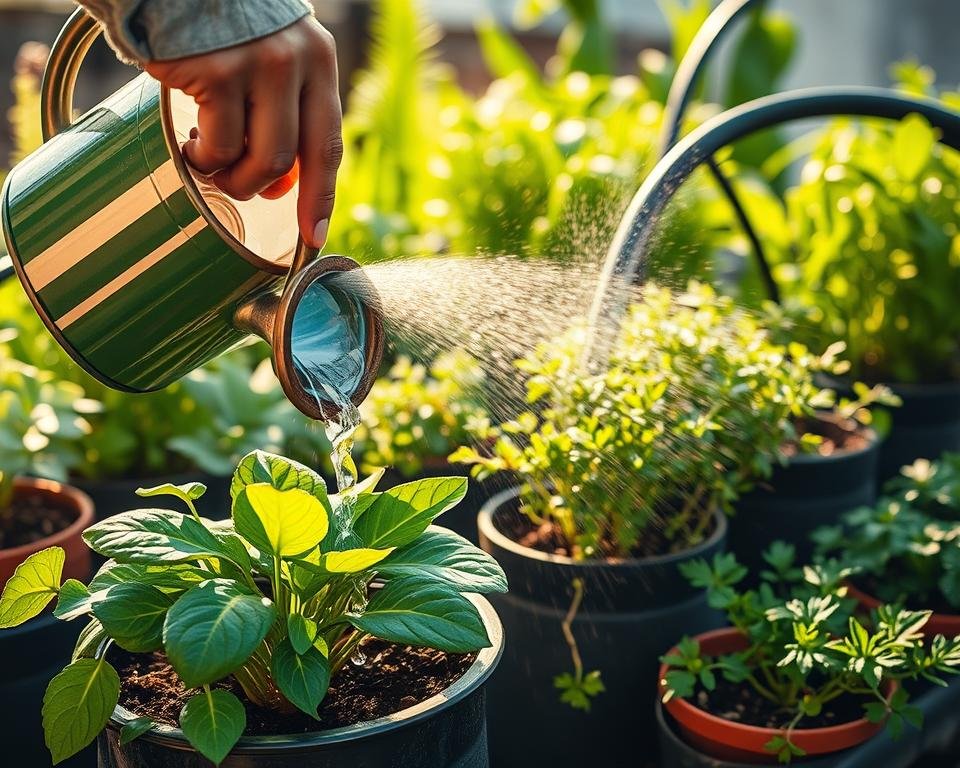Creating an Effective Watering Schedules for Container Gardens
The first time my prized rosemary plant wilted in the summer sun, I learned a lesson. Container gardening is not just about planting. It’s about mastering a precise watering schedules. Each pot is a delicate ecosystem that depends on your care.
Your container plants face unique challenges. Unlike traditional garden beds, they dry out faster because of their small soil volume. In summer, some small pots might need watering several times a day. This makes a strategic watering schedules crucial for their survival.
Container-gardening requires understanding your plants’ specific needs. Different materials like terracotta and plastic affect how much moisture they retain. Environmental factors like temperature and sunlight also play a big role in your watering approach. By creating a thoughtful watering plan, you can help your plants thrive.
Key Takeaways
- Container soil dries faster than traditional garden beds
- Morning watering minimizes evaporation
- Pot material affects water retention rates
- Regular moisture monitoring prevents plant stress
- Different plants require unique watering strategies
- Environmental conditions impact irrigation needs
Understanding Container Garden Water Requirements
Container gardens face unique watering challenges. The small soil space and weather exposure make watering crucial. Knowing how to manage moisture is key to your garden’s success.
Factors Affecting Water Needs
Many things affect how often you need to water your container garden. Different plants have different water needs:
- Flowering annuals like moist soil
- Succulents do well with some drying out
- Vegetables, like tomatoes, need steady moisture
Container-Specific Challenges
Container gardens dry out quicker than ground gardens. The type of pot affects soil. Terra cotta pots dry out fast, while plastic ones hold moisture better.
| Container Type | Moisture Retention | Watering Frequency |
|---|---|---|
| Terra Cotta | Low | More frequent |
| Plastic | High | Less frequent |
| Ceramic | Medium | Moderate |
Environmental Impact on Watering
Understanding drought tolerance means knowing about the environment. Weather, like temperature and humidity, changes how much water plants need. Small pots might need water up to three times a day in hot weather.
Keep a close eye on your containers. Check the soil moisture every day. Watering in the morning helps plants stay healthy by letting them dry before night.
Essential Components of Smart Water Management

Effective water conservation in container gardens needs a smart plan. Using smart irrigation, you can cut down water waste and keep plants healthy.
Key parts of smart water management include:
- Drip irrigation systems that save water
- Grouping plants by their water needs
- Advanced moisture monitoring tools
- Good soil preparation
Drip irrigation systems are a big change for container gardens. They can cut water use by up to 50% compared to old ways. Precision is key for saving water.
| Water Management Technique | Water Savings Potential |
|---|---|
| Drip Irrigation Systems | Up to 50% |
| Soil Moisture Sensors | 40% Less Overwatering |
| Smart Irrigation Controllers | 30% Less Water Use |
Today’s gardeners use tech to save water. Soil moisture sensors and smart irrigation controllers help. They cut down on water waste and help plants grow better.
Smart water management is more than saving water. It’s about making a sustainable garden.
By using these smart water strategies, your container garden will be efficient and water-smart. It will support plant health and reduce waste.
Watering Schedules for Different Seasons
Seasons change, and so does your container garden’s need for water. It’s important to adjust your watering schedules with the seasons. Each season has its own challenges that need careful watering plans.

Your watering schedules should change with the seasons. Different plants need different amounts of water. The weather also affects how often you should water.
Spring and Summer Irrigation Tips
In spring and summer, your plants need more water. This is because they grow faster and it’s hotter. Here are some tips for watering well:
- Water moisture-loving plants once per week
- Low-maintenance plants can be watered every two weeks
- Apply fertilizer monthly during active growth periods
- Water thoroughly until liquid runs from drainage holes
Fall and Winter Watering Adjustments
When it gets colder, your plants need less water. Winter watering needs to be more careful:
- Moisture-loving plants: Water every 10-14 days
- Low-water plants like cacti: Water every 3-4 weeks
- Reduce fertilizer application after September
- Avoid repotting during fall and winter months
Weather-Based Schedule Modifications
Flexible watering is key to successful container-gardening. Adjusting your schedule based on the weather helps:
- Monitor local weather forecasts regularly
- Adjust watering frequency during heat waves
- Reduce watering during prolonged rainy periods
- Use room temperature water to prevent plant shock
By following these seasonal watering tips, you’ll have a garden that thrives all year round.
Advanced Irrigation Techniques and Tools

Container-gardening needs careful water management. New smart water management tools have changed how we water our gardens. These tools help make your garden water-efficient and healthier for plants.
Drip irrigation systems are great for container gardens. They send water straight to the roots, cutting down on waste and ensuring plants get just what they need. The EPA says smart irrigation controllers can cut outdoor water use by 20% to 50%. This makes them a must-have for eco-friendly gardeners.
- Moisture sensors provide real-time soil hydration data
- Smart controllers adjust watering based on weather conditions
- Precision lawn sprinkler cycles minimize water overuse
Today’s gardeners can use the latest technology. Soil moisture sensors can boost irrigation efficiency by 15-20%. They remove the guesswork from watering, helping you avoid too much or too little water.
Self-watering containers are another smart way to manage water. They have built-in reservoirs that slowly release water, keeping soil moist without needing daily watering. Using these advanced methods, you can make your container garden more sustainable and easy to care for.
Conclusion
Your journey in container gardening is more than just keeping plants alive. It’s about creating a green space with care and saving water. You learn to balance moisture, container type, and plant needs for a thriving garden.
The watering schedule you make changes with the weather. Every garden is different, needing your special attention. By watching your plants and soil, you turn watering into an art.
Water conservation is more than just a method. It’s a way of thinking that connects your garden to the planet. Smart watering saves water, keeps plants healthy, and supports green gardening. Your small garden shows how our choices can help the environment.
Learning to water your garden is a journey. Be open to trying new things and always listen to your plants. With time and effort, watering becomes a caring act, not just a chore.







